#johannesgutenberg
Photo

Johannes Gutenberg
Johannes Gutenberg (l.c. 1398-1468) was the inventor of the printing press (c. 1450) who seems to have developed the device from wine and oil presses of the time. Gutenberg’s printing press not only revolutionized book making but literally changed the world in that ideas could now be shared over long distances with a wider audience than ever before.
Continue reading...
37 notes
·
View notes
Photo

Johannes Gutenberg
Johannes Gutenberg (c. 1398-1468) fut l'inventeur de la presse à imprimer (vers 1450); il semble avoir développé l'appareil à partir des presses à vin et à huile de l'époque. La presse à imprimer de Gutenberg non seulement révolutionna la fabrication des livres, mais elle changea réellement le monde, car les idées pouvaient désormais être partagées sur de longues distances avec un public plus large que jamais.
Lire la suite...
2 notes
·
View notes
Text
Chi ha inventato veramente la stampa?

Quando si parla di questo argomento, la prima persona che viene in mente a tutti è il tedesco Johannes Gutenberg, l’orafo e poi tipografo tedesco al quale fu commissionata nel 1453 la stampa di 180 copie della bibbia.
La sua invenzione dei caratteri mobili, cioè utilizzare delle unità mobili per duplicare un testo su carta, fu una genialata, per il XV secolo. Questo procedimento, che permetteva una pubblicazione delle opere più veloce e in grande quantità, diede un enorme impulso alla divulgazione e alla circolazione dei libri.
Ma è stato veramente lui il primo ad inventarla?
In realtà…no! O perlomeno, sarà stato anche il primo in Europa, ma se ci rivolgiamo verso oriente, per i caratteri mobili possiamo tornare indietro fino all’XI secolo.
Infatti intorno al 1045, durante la dinastia Song, l’inventore cinese Bi Sheng creò dei caratteri incisi nella porcellana, che però li rendeva molto fragili e quindi facilmente danneggiabili. Per questo motivo non erano molto adatti ad una stampa su larga scala.
Il suo sistema fu però migliorato a più riprese: prima intorno al 1300 ad opera di Wang Zhen, un ufficiale di corte che creò dei caratteri mobili incisi nel legno, ma che, come quelle create dal suo predecessore, non potevano essere riutilizzate a lungo, e più tardi, intorno al 1490, dal tipografo Hua Sui, che riuscì a creare dei caratteri utilizzando il bronzo.

Illustrazione di un'antica macchina tipografica europea in legno
Ma se parliamo di caratteri in metallo, allora per le prime stampe possiamo tornare ancora più indietro, fino alla Corea del 1234, dove il politico Choe Yun-ui pubblicò una cinquantina di copie di un libro che descriveva le tipologie di uniformi che i militari e i civili dovevano indossare durante le cerimonie.
Tutto questo quindi molto prima delle pubblicazioni di Gutenberg. Non a caso c’è chi pensa che in Europa la stampa sia arrivata proprio dall’oriente verso la fine del XIV secolo, ma non c’è ancora nulla di certo. Invece, la maggior parte degli studiosi concorda sul fatto che la tecnica di Gutenberg fu quella che si diffuse maggiormente nel mondo.
Ma prima ancora?
In realtà, potremmo tornare ancora più indietro e fare un tuffo tra gli antichi Sumeri, se vogliamo. Infatti già questa remota civiltà della Mesopotamia, che si sviluppò tra il IV e il III secolo A.C. riuscì a creare delle stampe rudimentali utilizzando dei sigilli cilindrici fatti di pietre dure o ossa, e di cui si servivano per stampare sull’argilla dei simboli amministrativi o religiosi. Tanti esemplari di questi cilindri e delle rispettive stampe si possono ancora oggi osservare al museo del Louvre di Parigi.
E sull’Italia si può dire qualcosa?
Ovviamente riguardo al nostro paese dobbiamo tornare molto più avanti nel tempo, infatti dopo Gutenberg le stamperie si diffusero rapidamente in tutte le principali città europee, ma soprattutto in Italia che fu una delle nazioni che spinsero maggiormente la diffusione dei libri. La prima opera pubblicata nel nostro paese fu un libro di grammatica latina per giovani, stampata nel 1465 in un monastero di Subiaco, nel Lazio.
Inoltre non possiamo non ricordare Gianbattista Bodoni, il tipografo piemontese che intorno al 1790 creò a Parma il carattere tipografico che porta il suo nome: il font Bodoni, appunto.
Read the full article
#antichisumeri#caratterimobili#gianbattistabodoni#Gutenberg#johannesgutenberg#LouvrediParigi#tipografia
1 note
·
View note
Text
The Impact of Johannes Gutenberg on Printing
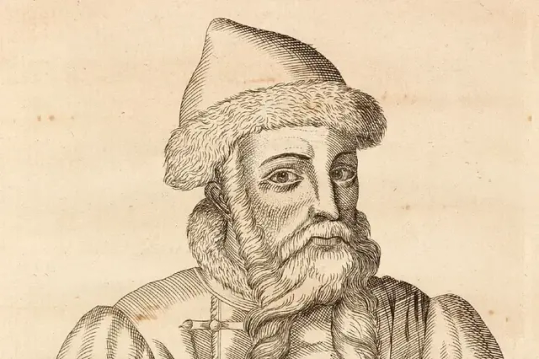
For centuries, books have been a source of knowledge and entertainment. However, it was only with the invention of the printing press by Johannes Gutenberg in 1440 that mass production of printed material became possible.
This is why Johannes Gutenberg is often referred to as the “Father of Printing”. Let’s take a closer look at his innovative invention and how it changed the world.
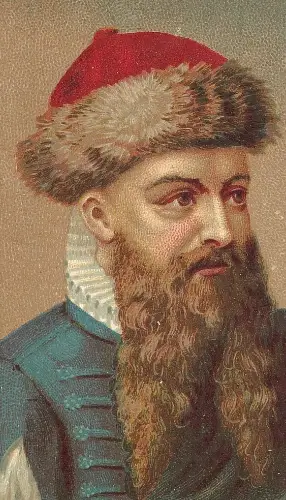
Johannes Gutenberg, printer's sample for the World's. Photo by The Metropolitan Museum of Art. RawPixel.
Early Life and Impact
Johann Gutenberg is widely known for his development of the printing press in the 15th century. This invention revolutionized publishing and made it easier to spread knowledge and ideas across Europe. While Gutenberg's achievements are well-known, his private life is not as widely discussed.
Gutenberg was born in Mainz, Germany, around 1400 CE as a member of a wealthy family. After spending some time living in Strasbourg, he returned to Mainz where he married a woman named Ennelin de le Mare and had two children with her.
He spent many years working on the printing press while also running a number of businesses in Mainz. It is believed that he eventually fell into debt due to his unsuccessful investments and this led him to develop the printing press in order to make money more quickly.
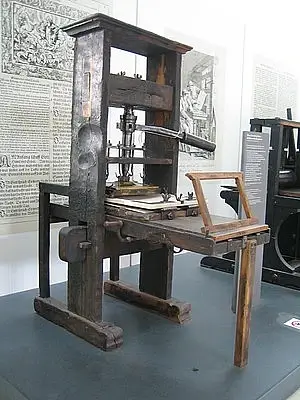
Gutenberg Press. Photo by Andrew Plumb. Flickr.
Gutenberg's Invention
Johannes Gutenberg was a German blacksmith, goldsmith, printer, and publisher who lived during the Middle Ages. In 1440, he invented a movable-type printing press that revolutionized printing technology by allowing for the mass production of books and other printed materials.
His invention used an adjustable mold that could be reused as new letters were needed to form words and sentences while printing.
This machine made it much easier to produce more copies in shorter periods of time than before allowing for the rapid dissemination of information around Europe via printed materials like books, pamphlets, newspapers, magazines, and more.
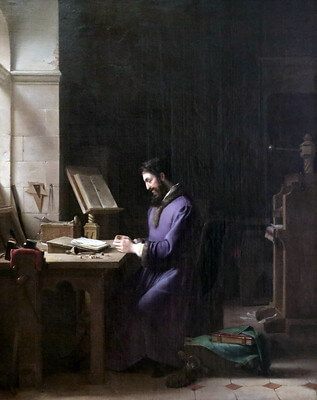
Gutenberg praying, the inventor of the modern printing press. Photo by Jean Louis Mazieres. Flickr.
The Spread of Knowledge
Before Gutenberg’s invention, books were expensive because they had to be written by hand—and therefore took much longer to copy than with a printing press.
Because these copies were so expensive, only wealthy people could afford them; most people relied on oral traditions or church sermons to learn about religion or politics instead.
Thanks to his invention, however, knowledge began to spread more rapidly among common citizens—leading to greater literacy rates across Europe and beyond.
Moreover, this newfound access to knowledge helped fuel various movements throughout histories such as the Renaissance period in Europe and the Abolitionist Movement in America—both of which rely heavily on written works for their success!

Image by Adam Winger, Unsplash. 27th Aug 2022.
The Impact Today
Gutenberg’s legacy still lives on today in many ways; from our ability to print out documents quickly at home or in an office setting; all the way up to 3D printers making custom parts for cars!
Furthermore, his invention paved the way for modern publishing houses where authors can share their stories with millions around the world without having to worry about costs associated with manual copying or distribution methods like mail delivery systems (which were also relatively new inventions at this time).
Finally - without Gutenberg’s invention: we wouldn't have computers or digital devices as we know them now either - since they rely heavily on printed circuits & components!
Conclusion:
It is impossible to overstate just how impactful Johannes Gutenberg’s invention has been over the past 600 years it completely revolutionized how information was transmitted and shared around Europe and beyond!
Not only did it open up access to knowledge for common citizens but also spurred massive social change throughout history due to its widespread availability.
Today we can still see its influence everywhere from our home computer printers up to 3D industrial ones being used in manufacturing plants around the world!
To say "thank you" doesn't even begin to cover what this incredible 15th-century inventor has done for us all!
Sources: THX News & Wikipedia.
Read the full article
1 note
·
View note
Photo

Verkaufe das Buch: Andreas Venzke - Johannes Gutenberg-Der Erfinder des Buchdrucks, erschienen im Benzinger Verlag Zürich. Johannes Gensfleisch, genannt Gutenberg, gilt als der Erfinder des Buchdrucks - einer Erfindung, die das Schicksal der Welt verändern sollte. Über sein Leben ist nur wenig bekannt. Er wurde um 1400 geboren, war oft in finanziellen Schwierigkeiten und hat nach zahlreichen Versuchen über zwanzig Jahre hinweg, zunächst in Straßburg, dann in Mainz, um 1450 den "Mobilletterndruck" erfunden. Den Link zu meinen Verkaufsangeboten findet Ihr im Profil. #andreasvenzke #johannesgutenberg #erfinder #buchdruck #johannesgensfleisch #leben #schwierigkeiten #straßburg #mainz #mobilletterndruck #gutenberg #büchertipp #buchblogger #bücherwelt #buchtipp #bücherauslese #lesen #bücherwurm #buchliebe #büchersüchtig #bücherempfehlung #buchempfehlung #bücherliebe #ebay (hier: Silke's Fundgrube) https://www.instagram.com/p/CaZh3iQKkee/?igshid=NGJjMDIxMWI=
#andreasvenzke#johannesgutenberg#erfinder#buchdruck#johannesgensfleisch#leben#schwierigkeiten#straßburg#mainz#mobilletterndruck#gutenberg#büchertipp#buchblogger#bücherwelt#buchtipp#bücherauslese#lesen#bücherwurm#buchliebe#büchersüchtig#bücherempfehlung#buchempfehlung#bücherliebe#ebay
0 notes
Photo
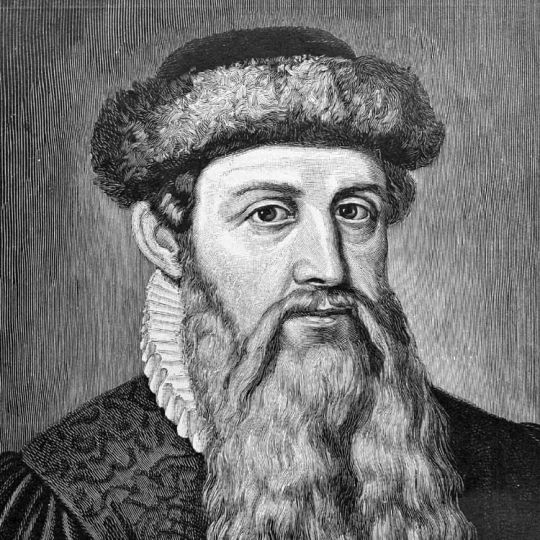
Johannes Gutenberg
Johannes Gutenberg (c. 1398-1468) fue el inventor de la imprenta (c. 1450), quien parece haber desarrollado el dispositivo a partir de prensas de vino y aceite de la época. La imprenta de Gutenberg no solo revolucionó la fabricación de libros, sino que literalmente cambió el mundo, ya que ahora las ideas se podían transmitir a largas distancias y llegar a un público más amplio que nunca.
Leer más...
0 notes
Video
youtube
Johannes Gutenberg ने Printing Machine बनाई फिर पूरी दुनिया ही बदल गई || Prabhat Exam
https://youtu.be/VPMEbl9GPeQ
Instagram: https://www.instagram.com/prabhatexam...
Telegram Link :- http://t.me/prabhatexam
#johannesgutenberg #printingpressinventor #aajkitarikh #prabhatexam #prabhatprakashan #printing
0 notes
Text
trixeratops -> johannesgutenberg
0 notes
Photo
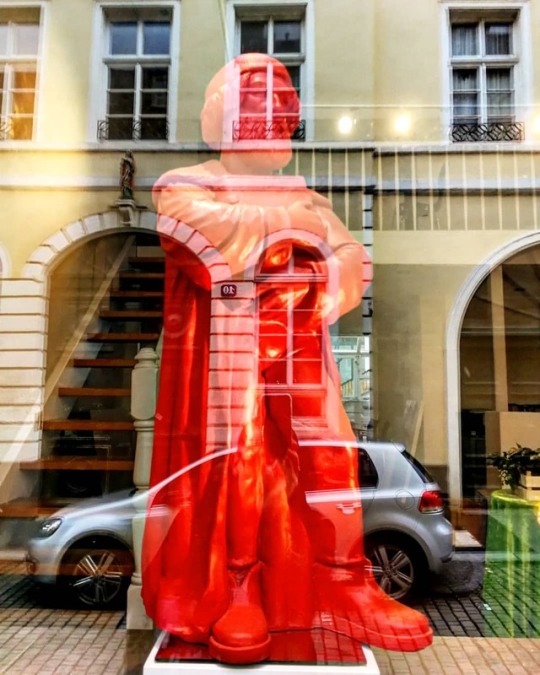
johannes gutenberg in #mainz #mainzeraltstadt #igersmainz #mainzaltstadt #gutenberg #johannesgutenberg #johannesgensfleisch #ottmarhörl @ottmarhoerl https://www.instagram.com/p/Br2KdXEA7QQ/?utm_source=ig_tumblr_share&igshid=1mg22ixj99q1f
#mainz#mainzeraltstadt#igersmainz#mainzaltstadt#gutenberg#johannesgutenberg#johannesgensfleisch#ottmarhörl
1 note
·
View note
Photo
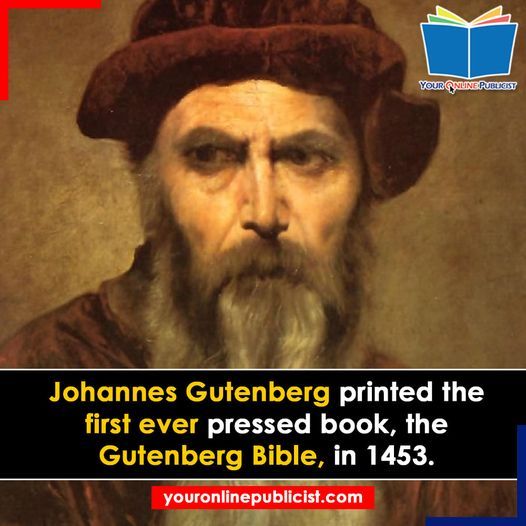
Johannes Gutenberg printed the first ever pressed book, the Gutenberg Bible, in 1453.
#DidYouKnow#JohannesGutenberg#YourOnlinePublicist#YOP#Facts#factoftheday#factsonly#factsdaily#FactsMatter#factsarefacts#dailyfacts#fact#literature
0 notes
Photo
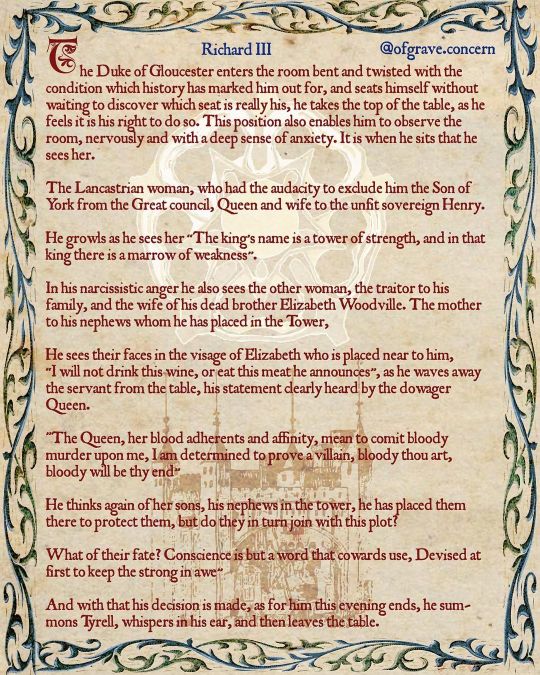
The guests have been seated, the wine has been poured, and the music has started to play. How will these characters of the 15th century interact, and will there be murder as the night continues? You are invited to witness…. @ofgrave.concern @historymagpie #richardiii #waroftheroses #houseofyork #houseoflancaster #margaretofanjou #vladtepes #vladdracula #zhenghe #nicolasflamel #hieronymusbosch #princesinthetower #elizabethwoodville #moctezuma #jeannedarc #joanofarc #johannesgutenberg #lucreziaborgia #williamshakespeare #medievalhistorylovers #15thcenturystyle #15thcenturyreenactment #15thcenturyart #15thcenturyfashion #dinnerparties #dinnerpartieswithpurpose #historicalcharacter #historicalcharacters #historicaldinner #historicalfantasy #historicalfantasyfiction https://www.instagram.com/p/CRrQVQSFmVo/?utm_medium=tumblr
#richardiii#waroftheroses#houseofyork#houseoflancaster#margaretofanjou#vladtepes#vladdracula#zhenghe#nicolasflamel#hieronymusbosch#princesinthetower#elizabethwoodville#moctezuma#jeannedarc#joanofarc#johannesgutenberg#lucreziaborgia#williamshakespeare#medievalhistorylovers#15thcenturystyle#15thcenturyreenactment#15thcenturyart#15thcenturyfashion#dinnerparties#dinnerpartieswithpurpose#historicalcharacter#historicalcharacters#historicaldinner#historicalfantasy#historicalfantasyfiction
0 notes
Photo
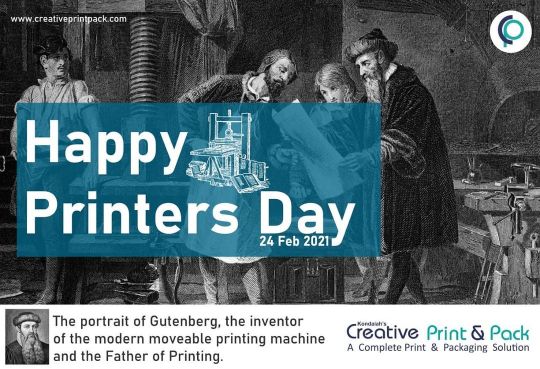
CPP wishes " Happy Printers Day " (24th February) #johannesgutenberg #printingpress #printing #printer #printersday #packingdesign #gutenberg #creativeprintpack #creativeprintandpack #thinkbeyondcreativity #weloveyourproduct #unboxyouridea #printpack #printers (at Kondaiah's Creative Print and Pack Pvt Ltd) https://www.instagram.com/p/CLqs7dAMKwe/?igshid=efl6vck7q014
#johannesgutenberg#printingpress#printing#printer#printersday#packingdesign#gutenberg#creativeprintpack#creativeprintandpack#thinkbeyondcreativity#weloveyourproduct#unboxyouridea#printpack#printers
0 notes
Photo
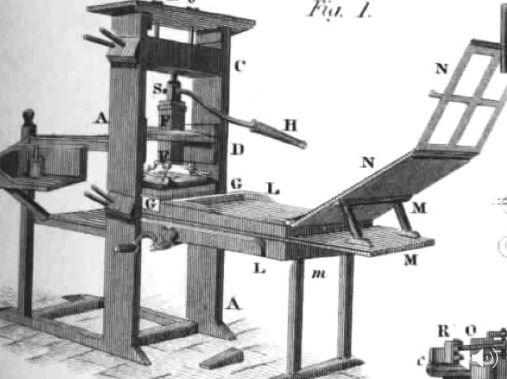

Week 4 Lecture
Early Printing
This week’s lecture focused on the early years of printing. One of the techniques for printing that was used in the olden days was woodblock printing, which was widely used throughout East Asia and originated in China in antiquity as a method of printing on textiles and paper. Johannes Gutenberg was the first person to have introduced printing to Europe with the use of the printing press. Books were also regarded as a luxury at the time and was a highly-sought item. The most popular font during that era was called the Blackletter, which was developed from the Carolingian letterform, due to the mass reproduction of text. However, Blackletter is said to be often associated with German Propaganda. In recent years, the Blackletter’s tradition is trying to be maintained, such as through the Disneyland theme park and the alcohol brand Jägermeister, where they would incorporate the font in the writing.
[Thoughts] I have never noticed how the font Blackletter is still being used until now. It does amaze me how typefaces never “expire” and will exist until the end of time (unless people forget about it). In my opinion, using a typeface does carry around a piece of their history, thus it is not unusual for people to still be implementing old typefaces in design. I wonder what kind of typeface will be popular in the future?
Johannes Gutenberg
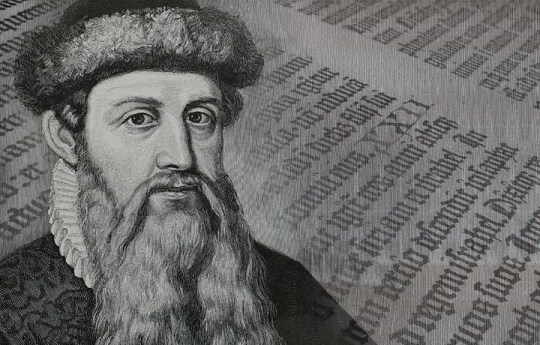
Johannes Gutenberg (Johann Gensfleisch zur Laden zum Gutenberg) was born in the 14th century in Mainz, Germany. He was a craftsman and inventor who originated a method of printing from movable type. There is little recorded history of this early life, but local records indicate he apprenticed as a goldsmith while living in Mainz. He started experimenting with printing in the year 1438. Gutenberg's masterpiece, and the first book ever printed in Europe from movable type, is the “Forty-Two-Line” Bible, completed no later than 1455. The printing press played a key role in the advancement of the Renaissance, the Protestant Reformation, and the Age of Enlightenment. He had afterwards passed away in Mainz in 1468.
Blackletter
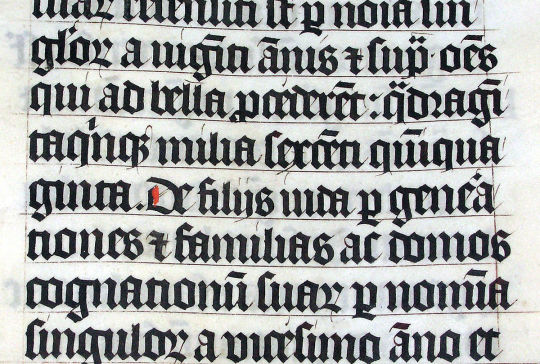
The Blackletter typeface (also sometimes referred to as Gothic, Fraktur or Old English) was used in the Guthenburg Bible, one of the first books printed in Europe. This typeface is recognizable by its dramatic thin and thick strokes as well as the elaborate swirls on the serifs. Blackletter typefaces are based on early manuscript lettering. In the 1500s, Blackletter became less popular for printing in many countries except Germany and the German speaking countries since it was difficult to read the text. In 1933, Hitler declared the new typography to be un-German and declared Fraktur to be “Volk”. The Nazis continued to use Fraktur extensively until 1941 when it was replace with more readable fonts. Blackletter is still used until today but are usually incorporated into headings, logos, posters and signs, for example in The New York Times heading as well as Corona beer labels.
first two images are from the lecture
image 3 https://history-biography.com/johannes-gutenberg/
image 4 https://en.wikipedia.org/wiki/Blackletter
Resources:
https://www.britannica.com/biography/Johannes-Gutenberg
https://www.biography.com/inventor/johannes-gutenberg
https://www.sitepoint.com/the-blackletter-typeface-a-long-and-colored-history/
0 notes
Photo
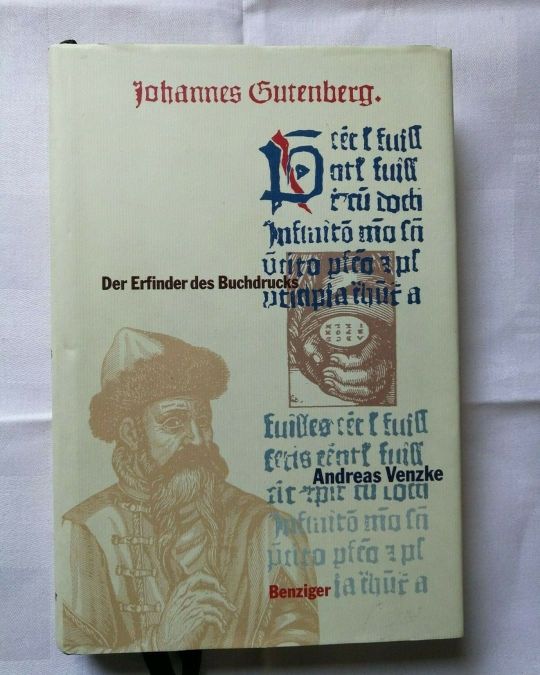
Verkaufe das Buch: Andreas Venzke - Johannes Gutenberg-Der Erfinder des Buchdrucks, erschienen im Benzinger Verlag Zürich. Johannes Gensfleisch, genannt Gutenberg, gilt als der Erfinder des Buchdrucks - einer Erfindung, die das Schicksal der Welt verändern sollte. Über sein Leben ist nur wenig bekannt. Er wurde um 1400 geboren, war oft in finanziellen Schwierigkeiten und hat nach zahlreichen Versuchen über zwanzig Jahre hinweg, zunächst in Straßburg, dann in Mainz, um 1450 den "Mobilletterndruck" erfunden. Den Link zu meinen Verkaufsangeboten findet Ihr im Profil. #andreasvenzke #johannesgutenberg #erfinder #buchdruck #johannesgensfleisch #leben #schwierigkeiten #straßburg #mainz #mobilletterndruck #gutenberg #büchertipp #buchblogger #bücherwelt #buchtipp #bücherauslese #lesen #bücherwurm #buchliebe #büchersüchtig #bücherempfehlung #buchempfehlung #bücherliebe #ebay (hier: Silke's Fundgrube) https://www.instagram.com/p/CaZh3iQKkee/?igshid=NGJjMDIxMWI=
#andreasvenzke#johannesgutenberg#erfinder#buchdruck#johannesgensfleisch#leben#schwierigkeiten#straßburg#mainz#mobilletterndruck#gutenberg#büchertipp#buchblogger#bücherwelt#buchtipp#bücherauslese#lesen#bücherwurm#buchliebe#büchersüchtig#bücherempfehlung#buchempfehlung#bücherliebe#ebay
1 note
·
View note
Link
The Gutenberg Bible (also known as the 42-line Bible, the Mazarin Bible or the B42) was among the earliest major books printed using mass-produced movable metal typein Europe. It marked the start of the "Gutenberg Revolution" and the age of printed books in the West. Widely praised for its high aesthetic and artistic qualities,[1] the book has iconic status. It is an edition of the Vulgate printed in the 1450s in Latin by Johannes Gutenberg in Mainz, in present-day Germany. Forty-nine copies (or substantial portions of copies) have survived. They are thought to be among the world's most valuable books, although no complete copy has been sold since 1978.[2][3] In March 1455, the future Pope Pius II wrote that he had seen pages from the Gutenberg Bible displayed in Frankfurt to promote the edition. It is not known how many copies were printed; the 1455 letter cites sources for both 158 and 180 copies...
#1455#History#Renaissance#Mainz#Germany#JohannesGutenberg#Religion#Literature#Bible#B42#MazarinBible#42LineBible#HistoryTimeline#TranslateSongsandArias
0 notes
Photo
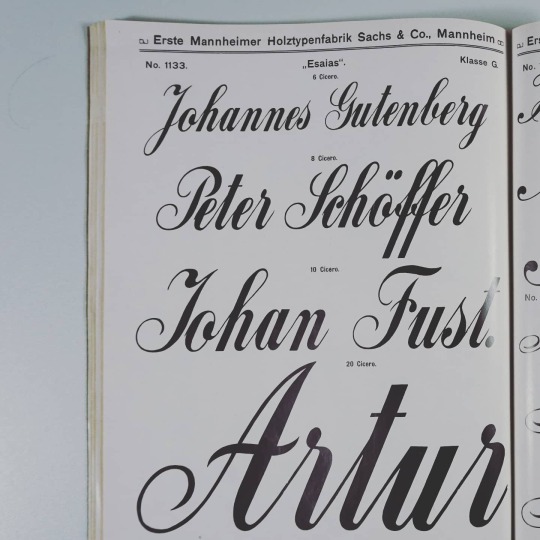
Esaias, #woodtype by Erste Mannheimer Holztypenfabrik Sachs & Co. #script #typespecimen #johannesgutenberg #gutenberg #peterschöffer #johannesfust #fust #artur
3 notes
·
View notes